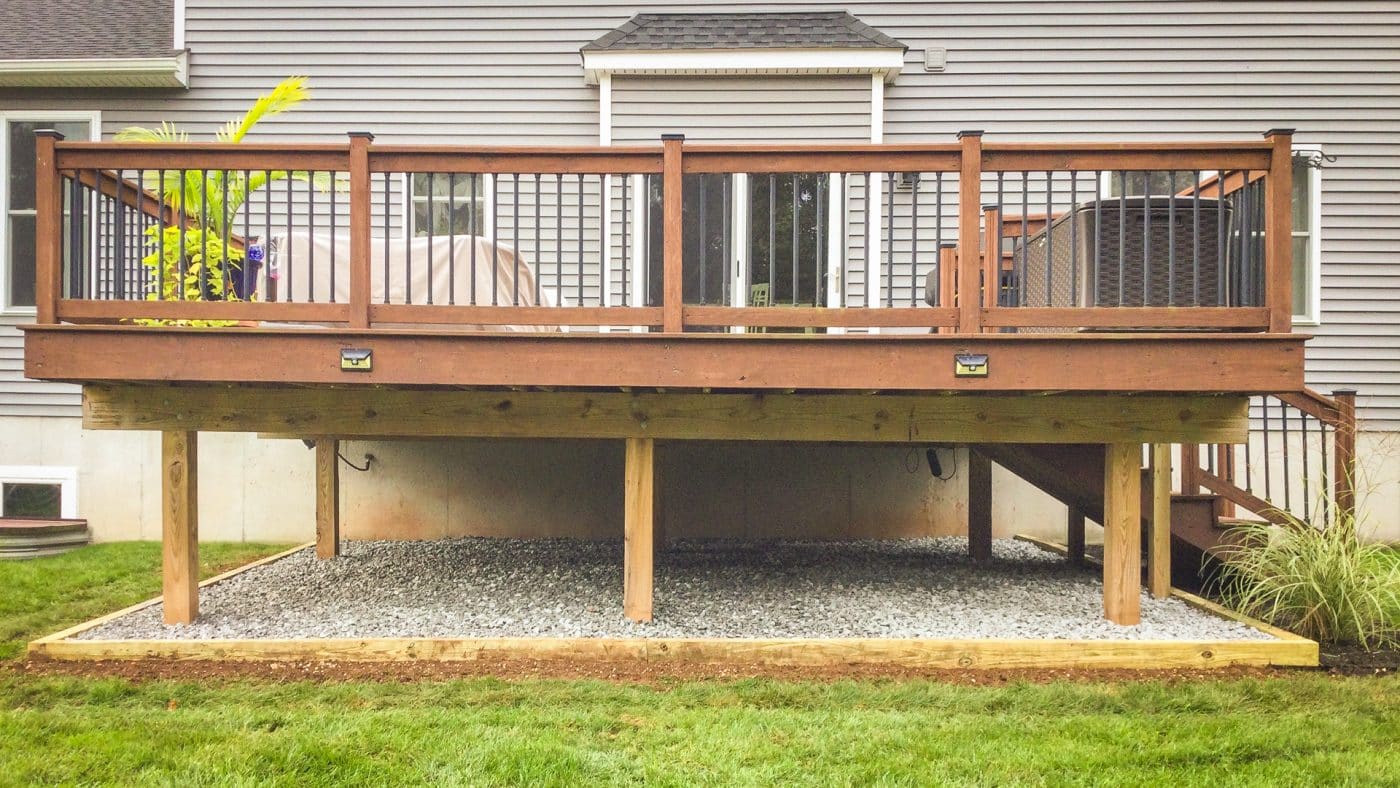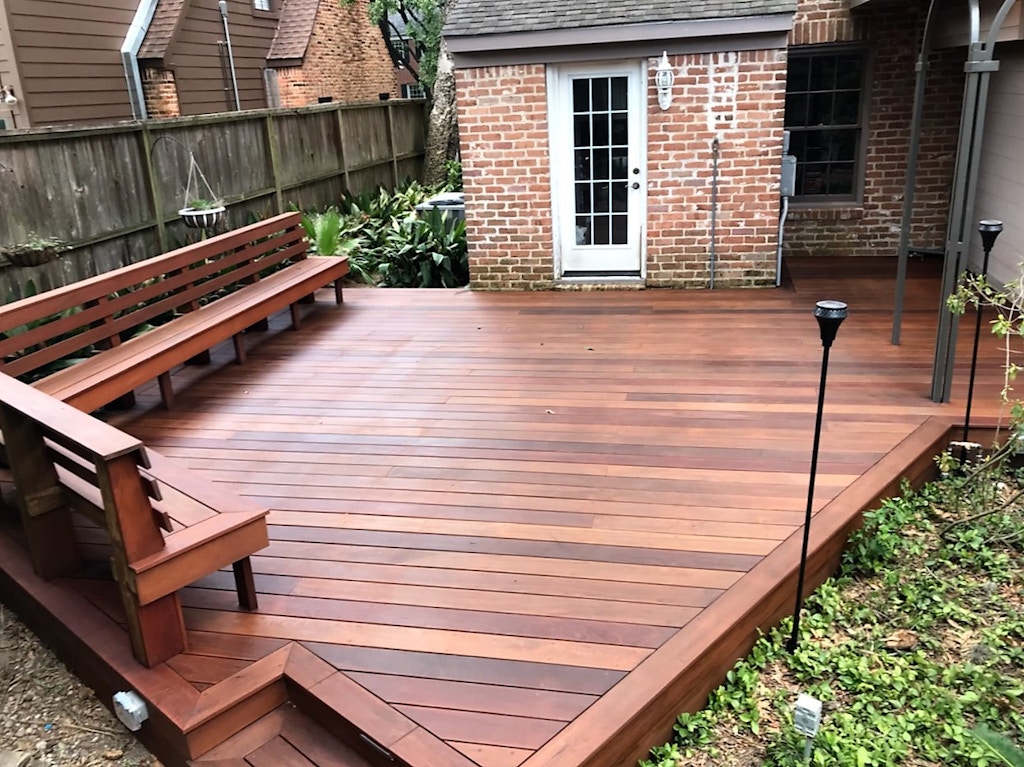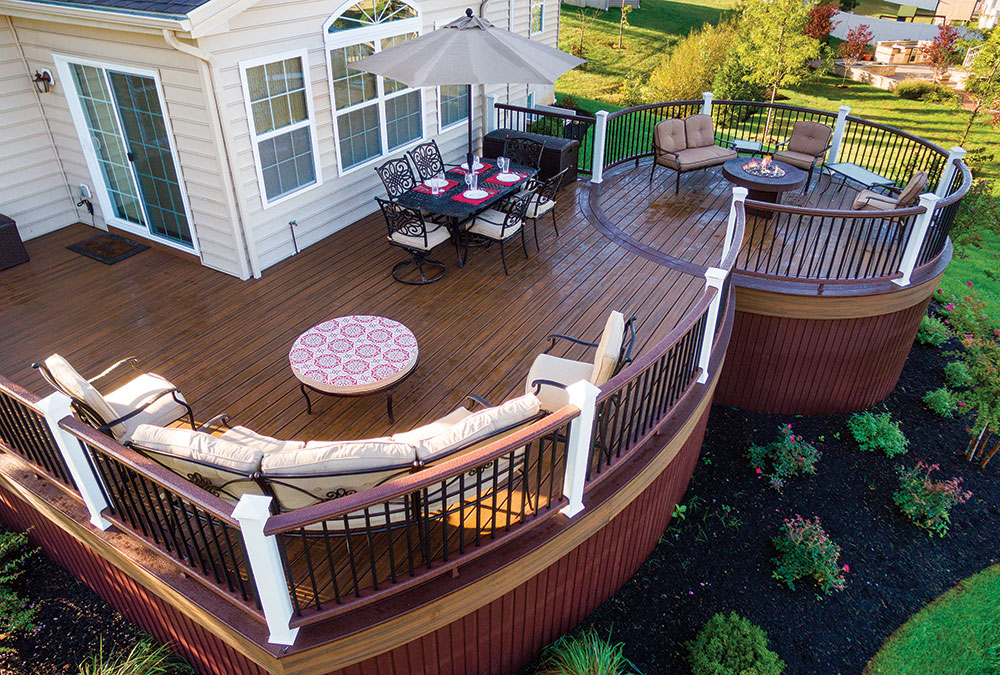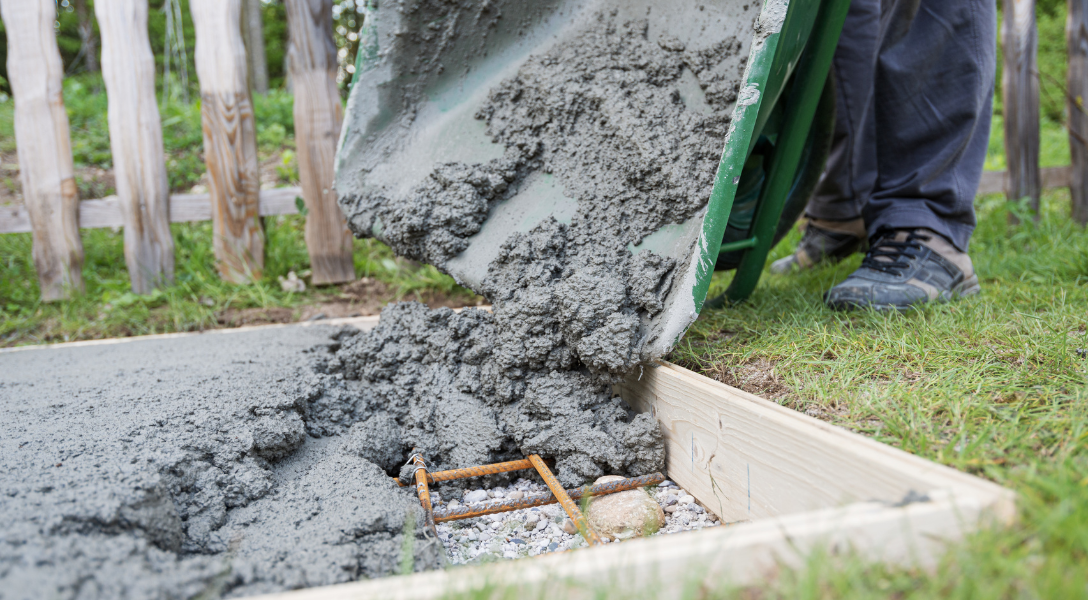Selecting the Perfect Decking Solution: An Overview to Different Materials and Styles

Pros and Disadvantages of Pressure-Treated Lumber
Pressure-treated lumber is a typically utilized decking product that offers both drawbacks and advantages. Furthermore, pressure-treated lumber is easily offered and affordable contrasted to various other decking products, making it a preferred selection among house owners.
Nonetheless, pressure-treated lumber also has its downsides. One significant concern is the chemicals utilized in the treatment process. These chemicals, such as copper and arsenic compounds, might position health and wellness risks if they leach right into the soil or are consumed. To mitigate this threat, it is very important to take care of and get rid of of pressure-treated lumber appropriately, adhering to standards given by manufacturers and governing agencies.
Another drawback of pressure-treated lumber is its appearance. The wood has a green color originally, which might not interest some home owners. However, with time, the timber weathers and tackles a much more all-natural look.
Discovering the Beauty of Cedar
Cedar, with its all-natural beauty and ageless style, is a preferred selection for decking jobs. Understood for its longevity and resistance to rot, cedar is a hardwood that supplies various advantages for exterior structures. The cozy, reddish-brown color of cedar includes a touch of natural sophistication to any type of deck, making it a favorite amongst house owners and developers alike.
Among the vital advantages of cedar outdoor decking is its capability to withstand extreme weather. Cedar includes all-natural oils that function as a protective barrier versus moisture, protecting against warping and breaking. This makes it an excellent option for locations with high humidity or constant rains.
In enhancement to its toughness, cedar is likewise very resistant to insects and decay - Ogden Decks. The fundamental buildings of cedar timber make it less attractive to bugs such as termites, guaranteeing that your deck stays structurally sound for years to find

When it comes to picking the perfect decking product, cedar supplies a combination of all-natural charm, resilience, and low upkeep. Whether you prefer a contemporary or typical style, cedar decking can elevate the visual appeals of your outdoor living location while offering durable performance.
The Low-Maintenance Appeal of Composite Decking
Composite decking supplies a low-maintenance option for property owners seeking a resilient and aesthetically pleasing outside deck. Unlike standard wooden decks that call for discoloration, sealing, and painting, composite outdoor decking is developed to resist fading, warping, and decomposing.
Among the main benefits of composite decking is its sturdiness. It is resistant to scratches, discolorations, and mold, making it excellent for high-traffic areas and regions with severe climate condition. Furthermore, composite outdoor decking is splinter-free, making it secure for family pets and kids to use. Its low-maintenance nature likewise encompasses cleaning, as composite decking can be conveniently cleaned up with soap and water or a stress washer (Ogden Decks).

In terms of looks, composite decking comes in a variety of shades and coatings, allowing property owners to pick a style that matches their outside room. Whether you favor the appearance of all-natural timber or an extra modern style, there is a composite decking choice to fit your preference.
The Classic Appeal of Wood Decking
With its enduring sophistication and all-natural beauty, hardwood decking deals homeowners a classic service for developing a gorgeous and inviting outside space. Wood, such as ipe, teak, or mahogany, is known for its sturdiness and resistance to rot, pests, and weathering. These high qualities make it an ideal selection for decking, as it can withstand the examination of time and retain its appeal for several years ahead.
Among the major advantages of hardwood outdoor decking is its visual charm. The rich, cozy tones and one-of-a-kind grain patterns of wood create a sense of luxury and sophistication. Whether you choose a traditional, traditional look or a more modern design, hardwood decking can match any kind of building style and improve the overall aesthetic of your outdoor location.
In enhancement to its visual appeal, wood decking also uses functional advantages. Hardwood decking requires minimal maintenance.
In spite of its many benefits, hardwood decking does have some considerations. It often tends to be much more pricey than various other outdoor decking products, and it my response calls for specialist setup to make sure correct positioning and stability. In addition, wood outdoor decking may require periodic staining or securing to preserve its shade and safeguard it from the components.
Letting Loose Creative Thinking With Alternative Decking Materials
While standard wood decking has its charm, different products can unleash imagination and give my review here a fresh visual for decks. Additionally, PVC outdoor decking is offered in various colors and styles, giving property owners the adaptability to produce a deck that matches their outside space. For those looking for an eco-friendly choice, there are additionally decking materials made from recycled plastic or reclaimed wood.
Conclusion
In conclusion, when selecting the perfect decking solution, it is crucial to think about the pros and disadvantages of various materials and designs. Compound decking deals low-maintenance charm, however may do not have the all-natural elegance of hardwood.
The cozy, reddish-brown shade of cedar includes a touch of natural sophistication to any type of deck, making it a favorite among designers and house owners alike.
Compound outdoor decking uses a low-maintenance service for home owners looking for a sturdy and aesthetically pleasing outdoor deck. Unlike conventional wood decks that need staining, securing, visit site and paint, composite outdoor decking is created to stand up to fading, warping, and rotting. While typical wood outdoor decking has its beauty, alternate products can unleash creative thinking and supply a fresh visual for decks. In addition, PVC outdoor decking is offered in numerous shades and designs, providing homeowners the adaptability to create a deck that complements their outside area.

